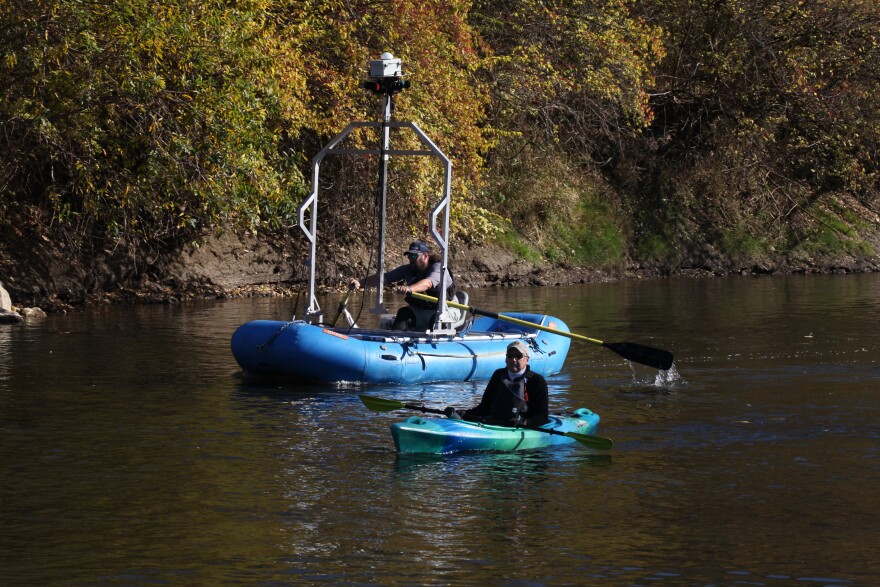Rafters are getting out on the Cuyahoga River as they work to create the watery equivalent of Google Street View for Northeast Ohio Regional Sewer District's waterways.
NEORSD is using spherical imagery to update 360-degree maps of its streams, culverts and bridges to spot any points of erosion or debris.

The maps are essentially Google Street View for rivers and streams, Stormwater Inspector for NEORSD's Stormwater Inspection and Maintenance program Kelsey Hickox said.
“It's really like you're standing in the stream on your, on your screen and you can scroll around and look 360 degrees all the way around you,” she said. “You're able to move forward or backward in the stream and also get that view as if you were turning around in a circle, standing there yourself.”
The sewer district partnered with OHM Advisors and Terrain 360 who will be working over the next six months to capture 210 miles of the regional sewer district’s waterways on both public and private property.
“The district ended up using us because it helps them kind of identify problem areas within their, you know, the, the watershed,” Terrain360 founder Ryan Abrahamsen said. “So it goes from a recreation side of things to a technical and environmental side of usage, which is I think a pretty cool application of the project.”
While most of the maps will be for the district’s internal use, terrain360.com will share the map of the main stem of the Cuyahoga River on its website.
“If you're … a kayak or a paddler, you get to actually see it as well,” Abrahamsen said. “It's a double benefit here. The district gets to see their assets along the watershed, and then … paddlers and other folks can kind of explore the river as well.”
Abrahamsen, along with Operator Ryan Crenshaw and Chief Research Officer Ben Fowler captured the images of the main stem of the Cuyahoga River and Chippewa Creek.

Internally, the maps will be used to supplement the inspection process, giving NEORSD employees a chance to get a better sense for the service an area might need before getting out in the field.
“Before I go do my inspection, I can look ahead,” Hickox said. “I have an idea of if I'm going to need my muck boots or my chest waders, how deep the water is, if there's a waterfall or a dam that I maybe don't already know about, if it's not a spot that I've been to, as well as just accessing it.”
A waterway may need to be serviced if its experiencing erosion for increased rainfall and stormwater runoff or blockages from debris that can lead to flooding in urban areas, Hickox said.
“If it's in the middle of the woods and it's not going to cause any flooding upstream, we'll leave it there because it can be a good source of habitat for fish and macro invertebrates,” she said. “But if it's right at a street bridge and it's a pretty low lying area and there's homes nearby, we'll get that out of there just to make sure that it's not going to make the flooding any worse in the area.”
Crews will be on the water mapping Cuyahoga River watersheds through spring 2024. NEORSD hopes to create 360-degree maps of the Rocky River, Chagrin and Lake Erie tributaries starting in the fall of 2024 but has not yet finalized those plans.


